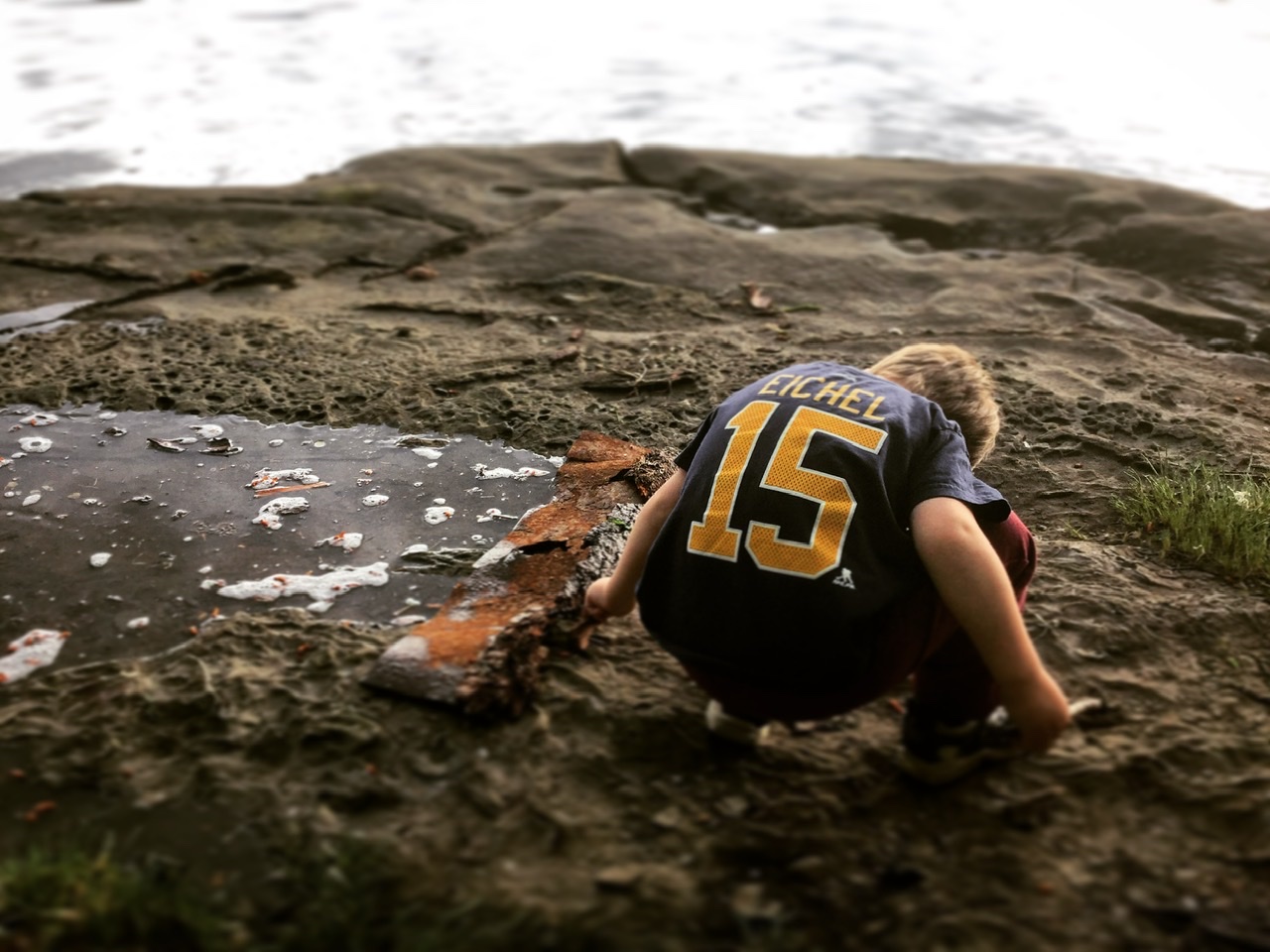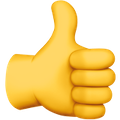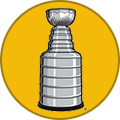-
Posts
31,778 -
Joined
-
Last visited
Content Type
Profiles
Forums
Events
Everything posted by dudacek
-
Adams: 'We've made it clear we want him here, he's made it clear he wants to be here' He says they are aligned, it's just a matter of the numbers. Thoughts?
-
Lindy very clear that Benson needs to produce more if he wants to be in the top 6. Also sounds like he will look hard at Norris with Tage but he did like what Kulich did there. Tage as a winger is definitely the starting point, with Tuch and Tage on different lines.
-
Lindy made it absolutely crystal-clear that Norris is going to be leaned on as a 1C. Also called him the missing piece to a PP where they plan to put a 5-man unit together, keep it together and lean on it hard
-
You can click the pieces together in a lot of interesting ways. Thompson Norris Zucker would be a trustworthy first line to go with your second and allow them to run a sheltered Kulich Benson Quinn 3rd line like Vanek Roy.
-
Also, Danforth, Krebs and Doan is a fun 4th line that is going to annoy the ***** out of people.
-
This is what I’ve settled on too. I think a big reason why is that it puts each of the three young players we most desperately need to step up - Benson, Quinn and Kulich - in the situations where they are best able to do that.
-
I think McLeod/Greenway would be on a traditional checking 3rd line with Doan probably best suited as the 3rd checker. McLeod/Tuch would be more of a matchup 2nd line that would probably be maximized with Benson. Those are the 5 Sabres I’d say are the most reliable defensively. Ottawa used Norris as a primary defensive situations guy last year. Theoretically, the Sabres top 2 lines should better in their own zone this year with Cozens and Peterka no longer getting those minutes. The vibe I get is the Sabres are going to give Quinn every opportunity to rebound. Playing with Tuch and McLeod - defensively responsible, fast guys who can pass - is probably the best possible situation for him.
-
4 pm PST Monday I will be working. The rest would work
-
Is Quinn the 3rd-line RW or do they switch him to the left to replace Peterka in the top 6? How long is his leash? Has Benson graduated to the top 6 or do they see him first as a checker? Do they intend to give Kulich every opportunity to be the other top 6 centre? Or does he get more favourable matchups on a 3rd line? Do they see Doan as bottom six grinder or will he get a shot with some of their better players? Same question with Greenway? Are Krebs and Danforth inked onto the 4th line or do they have any upward mobility? Malenstyn is a safe bet to be a 4th-line pounder, but is he an everyday player?
-
So many ways the forwards can be arranged: Tage is the biggest offensive threat and will anchor a scoring line. Likely a RW, possibly at centre. Will they load him up with vets or ask him to carry kids again? Will Tuch join him on a true 1st line, be counted on to anchor a 2-way 2nd line, or will he be asked to carry kids? Will they use Norris as a 1C? Will it be with Tage, or with Tuch, or both? Will McLeod centre a 3rd line checking line, a 2nd line matchup line, or be asked to be the defensive conscience with some offensive wingers? Where in the top 9 do they plug Zucker?
-
Assuming health, 13 forward spots set and 6 D. If UPL is healthy, he and Lyon are the goalies. Kozak will try to be the 14th forward. Johnson, Jones and Bryson will battle for 7D. 2 of those 4 will make the team. Georgiev and Levi will fight to be the 2nd goalie if UPL is out for any length of time.
-
I haven’t played for awhile. Interested if you need another
-
Pisses me off too, but if camp hasn’t started they probably don’t even have updates.
-
2025 Prospects Challenge at Harborcenter 9/11-15
dudacek replied to PromoTheRobot's topic in The Aud Club
Kid projects to be a minor leaguer this season and peak as a Ryan McLeod. He played 3 games, got one goal, was his team’s most noticeable forward. 🤷 -
Sabres Tickets - Shockingly Cheap to Start the Year
dudacek replied to Mango's topic in The Aud Club
It remains utterly shocking to me that the Adams regime wasn't flushed in April. Never mind the hockey reasons, the business of the Sabres is absolutely gasping for it. The most likely scenario for this season remains a ***** start, followed by boos, paper bags, a bloodletting, followed by the 4 months of empty seats, 'who cares?' hockey and another 8th overall pick. -
Very good perspective from the Athletic on some of our top prospects. Basically they've taken Wheeler's rankings as a starting point and vetted them through a number of NHL pro scouts and execs to provide insight on what the industry generally thinks of players and where they're likely to end up on an NHL depth chart when they are fully mature. https://www.nytimes.com/athletic/6562503/2025/09/15/nhl-prospect-tiers-2025-26/ For reference, Dahlin is what a tier 2 guy looks like when he grows up, and Thompson a tier 3. Tier 5 guys include players like Monahan, Fiala, Gavrikov and Rust The 122 players considered to likely be above-average NHL regulars (a little less than 4 per team on average) includes: Tier 1 — MVP A top 10 player. Someone who is very likely to get serious trophy consideration at season’s end and whom championship-caliber teams are built around. The best player on almost any team in the league. Celebrini, Bedard Tier 2 — Franchise A top 30 player. Someone who is the best player on a contending team or second best on a championship-caliber team. An unquestionably elite player. Schaefer, Michkov, Hutson, Fantilli, Demidov, Cooley, Johnston, Carlsson, Misa Tier 3 — All-Star A top 60 player. Someone who wouldn’t be the best player on a contender, but would be an important part of any contending or championship core. A strong top-line forward, above average No. 1 defenseman, or borderline top five goalie. Owen Power (high-end of the tier): "Power is an interesting one, because the NHL people Dom, Shayna and Sean surveyed for Player Tiers who work on the pro side have grown frustrated with his lack of physicality and take-charge, but the amateur folks I surveyed still have a tough time putting prospects over a defenseman who has already played 25 minutes per game in the NHL for years at an early age. One scout did say that he'd have Power a letter grade lower, though, so the two groups may be coming closer together. This feels like a prove-it year for him despite his strong NHL results and usage." Tier 4 — Star A top 100 player. Someone who would be a strong piece within a contending or championship core, but not a go-to option. An average top-line forward, below average No. 1 defenseman, or top 10 goalie. Jiri Kulich (bottom end of the tier) Even though he spent a lot of time high in an NHL lineup as a rookie last year, he looks more like a center than a winger after playing both coming up, and has clear power-play tools because of his shot. Scouts are still in a wait-and-see mode in setting Kulich's ultimate upside. They want to see him produce more than the 20-goal, 32-point pace he played at last year. I don't think 30 goals and Tier 4B is viewed as out of the question at all, but he's not viewed in the same light as an Eklund or Nazar. Zach Benson (bottom end of the tier): Benson fell from Tier 4A a year ago to Tier 4C and nearly Tier 5A this year. He's viewed as a bubble Star/Support guy, and while teams respect his craft and work ethic, the clock has started on wanting to see him score more. Radim Mrtka (bottom end of the tier): Mrtka is a towering defenseman who skates at a high level and was a top-10 pick, which automatically lumps him in with Simashev and Silayev. He has a little more offense and poise than those two, but isn't viewed as the same level of defender. Tier 5 — Support A top 150 player. Someone who would offer strong support to a contending or championship core, but wouldn’t be an integral piece within it. A below-average top-line forward, a strong No. 2 defenseman, or an above average starter. Konsta Helenius (middle of the tier): Scouts are a little softer on Helenius today than they were a year ago, and there was some discussion about maybe moving him down to Tier 5C after his rookie season was just OK. But the AHL is a hard league for 18-year-old centers, and everyone seemed content to wait another year before adjusting his slotting. Noah Östlund (bottom end of the tier): Östlund is a player who is beloved by coaches and scouts alike for his blend of speed and creativity on offense, and his commitment to the little details off the puck. He's also viewed as a comparable player and prospect to the others in this tier. And yet the consensus is that he's a bubble guy for inclusion here. He got enough love to make it, but some wonder whether he'll score enough in the NHL or become more of a Peyton Krebs type.
-
2025 Prospects Challenge at Harborcenter 9/11-15
dudacek replied to PromoTheRobot's topic in The Aud Club
David Bedkowsi has continued his terrible play from the 1st game. -
2025 Prospects Challenge at Harborcenter 9/11-15
dudacek replied to PromoTheRobot's topic in The Aud Club
Novikov looked solid, Komarov was very much in command, although he was the weak link on the PP. Very impressed with Mrtka: assertive at both ends. -
2025 Prospects Challenge at Harborcenter 9/11-15
dudacek replied to PromoTheRobot's topic in The Aud Club
Östlund frequently has the puck, or is always around it. He was the team’s best two-way forward. Wahlberg was a bit in and out, but there were some puck protections, takeaways and board work that looked very good. -
2025 Prospects Challenge at Harborcenter 9/11-15
dudacek replied to PromoTheRobot's topic in The Aud Club
Rosen made one terrific goalmouth play that should have been buried but just didn’t have the puck much, or much impact on the game. Helenius was better, and more involved, but again not much in the way of playmaking. -
2025 Prospects Challenge at Harborcenter 9/11-15
dudacek replied to PromoTheRobot's topic in The Aud Club
From the lesser lights: Bedkowski and Brunet were each directly responsible for goals against and were the weak links back there. Laberge is a terrific skater, kinda like a bigger Bryson. Kopf, Savage and Fiddler-Schultz lack skill. Kucharcik looked big and smart -
2025 Prospects Challenge at Harborcenter 9/11-15
dudacek replied to PromoTheRobot's topic in The Aud Club
First time, I’d ever watched Leinonen play a full game. He sure looks the part. Marty picked apart a few details, but to my less-educated eye he looked athletic controlled and massive. The goals werent his fault and he made some big saves. It was a good first impression. -
The Hopium Den: 10 reasons why the Sabres could be better this year
dudacek replied to dudacek's topic in The Aud Club
This has no place in the hopium thread. Plenty of of other places to talk about this.







